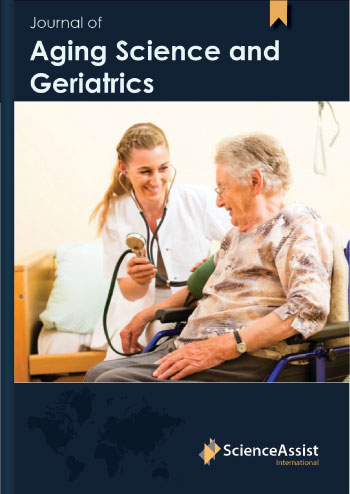
Volume 2, Issue 1 (2021)
Valerio Massimo Magro1,*, Eugenio Boccalone2
1Department of Internal Medicine and Geriatry, University of Campania “Luigi Vanvitelli”, Naples, Italy
2ASL Avellino, Avellino, Italy
- *Corresponding Author:
- Dr. Valerio Massimo Magro
Department of Internal Medicine and Geriatry, University of Campania “Luigi Vanvitelli”, Naples, Italy.
Tel: 3492224922
E-mail: valerio_magro@hotmail.com
Received date: May 24, 2021; Accepted date: June 24, 2021; Published date: June 30, 2021
Citation: Magro VM, Boccalone E. Use of tapentadol in frail elderly patients with dementia: the opinion of the geriatrician. J Aging Sci Geriatr. 2021;2(1):7-10.
Copyright: © 2021 Magro VM, et al. This is an open-access article distributed under the terms of the Creative Commons Attribution License, which permits unrestricted use, distribution, and reproduction in any medium, provided the original author and source are credited.
Background
The management of pain in the elderly and frail patient is complicated because of the risks posed by changes in pharmacokinetics and pharmacodynamics, polypharmacy, and drug-disease interactions. Literature suggests patients with dementia thought to have pain or a painful condition received opioid analgesics 67% less often, and 45% did not receive treatment at all in comparison with those without dementia. Age itself is one of the main risk factors for both potentially painful pathologies (osteoporosis, arthritis, cancer) both dementias. The treatment of pain in the elderly patient can be a problem that is made more complex if there is also the presence of a possible state of cognitive decline due to neurodegenerative diseases such as dementia. Given the difficulty in reporting pain and its extent, due to the state of dementia, in these subjects, this phenomenon risks being underestimated and under-treated [1]. Several drugs for the treatment of pain have even severe adverse events in the elderly patient, increasing the risk of bleeding, decreased filtration function by the kidney, increased pressure, and not least possible worsening of cognitive status. The most important side effects are nausea, constipation, urinary retention, central nervous system adverse effects (like sedation and mild cognitive impairment), pruritis, respiratory depression, cardiovascular events (related by QT prolongation), endocrine effects (about a hypothalamic-pituitaryadrenal axis, and also on the hypothalamic-pituitarygonadal axis, resulting in a reduced serum luteinizing hormone and cortisol levels and increased prolactin levels). The recommendations from The European Association of Palliative Care (EAPC) Research Network for management of opioid side effects include dose reduction, symptomatic management of the adverse effects using drugs targeting the symptoms, opioid rotation, and switching the route of administration.
